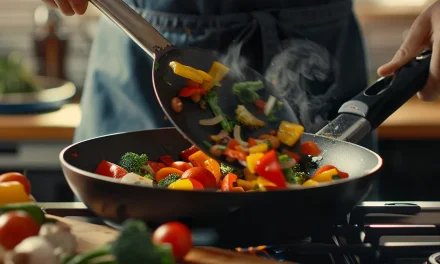Are you struggling to grow luscious basil plants in your garden or on your windowsill? This comprehensive guide will navigate you through the full spectrum of nurturing this beloved herb, from understanding the range of basil varieties and their specific needs, to planting with the right soil pH and care strategies for robust growth. Learn how to combat common pests and diseases that threaten your basil, and gain tips on harvesting and preserving leaves for your favorite sauces and other culinary delights. Whether you’re a seasoned gardener or new to the world of herbs, the insights here will equip you with the knowledge to cultivate basil plants successfully, ensuring a fragrant and bountiful harvest.
Understanding Basil Varieties and Their Characteristics

In our quest to cultivate thriving basil, it’s essential to navigate the various species and their distinct traits. Sweet basil may reign supreme in Italian dishes, but other varieties like lemon basil or Thai basil offer unique flavors, perfect for elevating salads, spicing up green beans, or garnishing dishes. Selecting the ideal basil type for your garden hinges on understanding each plant‘s climate and soil predilections. As we delve into these specifics, I’ll share insights on how to achieve a bountiful basil harvest suited to your culinary needs.
Differentiating Between Sweet Basil and Other Types
Among the Lamiaceae family, sweet basil emerges as a favored pick for both novice and seasoned gardeners, distinguishable from its counterparts such as the aromatic cinnamon basil, with its distinct clove-like scent. While many basil varieties thrive under similar care, recognizing each type’s specific needs can optimize growth. For instance, cinnamon basil not only perfumes your garden but can transform a simple dessert; understanding its preference for a slightly more acidic soil pH compared to sweet basil ensures its robust vitality.
I’ve learned through experience the importance of proper pruning across all basil types to encourage fuller plants and greater yields. This practice is particularly vital for sweet basil to forestall flowering and extend its harvest period. When caring for other basil kinds, such as lemon or cinnamon basil, frequent pruning also plays a critical role in maintaining plant health and flavor intensity, demonstrating that a well-manicured herb garden is not just for aesthetics but essential for culinary quality.
Moreover, the correct use of mulch can be the unsung hero in basil cultivation, helping to regulate soil moisture and temperature. It’s noteworthy that while sweet basil enjoys a moist environment, too much humidity can lead to fungal diseases. The strategic application of mulch around the base of your basil plants, therefore, is a vital technique I’ve adopted to balance these factors and secure a thriving herb patch adaptable to a variety of basil species, including the less common purple ruffles or Thai basil.
Choosing the Best Basil Variety for Your Garden
When I choose basil varieties for my garden, soil conditions are a top consideration. Sweet basil loves rich, well-drained soil, but if I’m dealing with a garden prone to dampness, I might opt for a variety resistant to common ailments such as downy mildew. Varieties like Genovese basil, with its robust flavor, are stellar for pesto and perform best in soil that isn’t overly moist.
I’ve found that starting with quality seeds makes a significant difference in the success of my basil plants. I make it a point to source fresh seeds from reputable suppliers to ensure strong germination and healthier plants. Whether it’s for sweet basil or exotic varieties like Thai basil, which imparts a licorice-like zing to dishes, using fresh seeds means I can expect predictable growth and flavor profiles.
Seasonality also plays a crucial role in the selection process. While I adore the classic sweet basil for its versatility and generous leaf size, growing it in cooler climates can be challenging. In such cases, I may select a hardier variety that can withstand lower temperatures, ensuring I still enjoy a fresh basil harvest for my salads and sauces well into the cooler months.
Identifying Basil's Climate and Soil Preferences
In my journey of growing basil, I’ve learned that this aromatic herb flourishes in climates offering warm temperatures and ample sunlight, ideally receiving six to eight hours of daylight. Basil plants demand consistent moisture to ensure lush, flavorful leaves; however, it’s crucial to avoid waterlogged soil as this can lead to root rot. A balanced approach to watering, providing just enough moisture without flooding the plant, is key to a robust basil harvest.
Through trial and error, I’ve discovered that the best soil for basil is rich, loamy, and well-draining. I’ve achieved great success by amending my garden beds with compost or a quality vegetable mix, which provides the essential nutrients the basil requires. On occasions when I’ve cultivated basil alongside tomato plants in my kitchen garden, I’ve noticed a favorable impact on both the herb‘s growth and the tomatoes, affirming the benefits of companion planting.
Adaptability to local conditions is vital when selecting basil varieties for your garden. For instance, while some basil types might tolerate slightly cooler environments, I’ve generally found that they all prefer a warm, mild climate to thrive. To mitigate against unexpected cool spells, I’ve learned to shelter my basil plants using a cloche or garden fleece, ensuring my kitchen garden remains green and productive even when the temperature dips.
Having explored the myriad of basil types, each with distinct flavors and uses, we know our choices. Let us now turn to the earth, where proper planting ensures their vigorous growth.
Planting Basil for Optimal Growth

Planting basil successfully requires attention to detail from the start. Preparing the right soil sets the stage for healthy growth, whether using seeds or seedlings. I’ve found that choosing a sunny spot is crucial to give basil, especially varieties like cinnamon and il basilico, the energy they need. Considering companion planting strategies can boost both the health and flavor of basil and its neighbors. Up next, I’ll delve into each of these planting essentials, ensuring your basil contributes to delicious recipes and offers the vibrant greenery your garden desires.
Preparing the Soil for Basil Planting
When I set out to plant basil, I focus on creating a nurturing soil environment that can contribute not just to vigorous growth but also to the herb‘s notable health benefits. Basil needs a fertile, well-draining foundation – I often enrich the soil with organic matter, which also enhances the flavor profile, essential for giving that extra punch to dishes like pasta. By incorporating well-rotted compost or aged manure, I increase soil fertility, which in turn ensures my basil has the nutrients it needs to thrive.
To ensure my basil plants receive adequate water without becoming waterlogged, I pay close attention to the soil‘s texture. Loamy soil that retains enough moisture yet facilitates drainage allows basil roots to access water as needed but avoids the stagnation that can breed disease. I’ve found that monitoring soil consistency before planting prevents issues down the line, fostering a basil crop that is as robust as it is resilient, ready to be transformed into pestos or garnishes that complement the sharpness of black pepper in countless recipes.
In my experience, companion planting has proven to be an invaluable strategy when preparing soil for basil. By planting basil near allies like tomatoes and peppers, I benefit from natural pest control, enhancing the surrounding soil‘s ecosystem, which ultimately bolsters the basil‘s growth and imparts a fuller flavor to the leaves. Carefully selecting and preparing the soil for these plant companions helps me capitalize on the symbiotic relationships in the garden, creating a harmonious space brimming with flavor and vitality.
Starting Basil From Seeds or Seedlings
Choosing whether to start my garden with basil seeds or seedlings often sets the tone for the entire growing season. Seedlings can offer a significant head start, especially for sweet basil, as they tend to be more robust against pests and poor weather when transplanting. However, cultivating from seed can also be satisfying, allowing me full control over the growing environment from the earliest stages.
When I plant basil seeds directly into the garden, I take extra care to ensure the soil is warm and moist, a nurturing bed that promises steady germination. My hands have treaded through countless gardens, and I’ve observed basil seeds prefer a shallow sowing; too deep, and they may not make the necessary climb to sun and air. Seedlings, on the other hand, require a gentle touch during transplanting, with attention focused on avoiding root disturbance for optimal growth.
One advantage I find in starting with seedlings is the ability to sidestep some early-season pests that target young basil plants. I’ve noticed that integrating companion plants like lettuce near my basil can deter pests naturally, fostering a more harmonious ecosystem in my garden. This companion planting not only protects my sweet basil but also contributes to an aesthetically pleasing and functional garden space.
Selecting the Ideal Location for Basil Plants
When I select a spot in my garden for basil plants, my focus is on ensuring they receive full sun. Sunlight is the key ingredient that brings out the robust taste in basil leaves, whether it’s the Italian classic il basilico or exotic types. I choose locations that bask in at least six hours of direct light, a crucial factor that has consistently rewarded me with healthy plants, less prone to disease and brimming with flavor – essential elements whether my basil ends up in a soup, drizzled with oil in a caprese salad, or topping a freshly baked pizza.
In my pursuit of the perfect basil harvest, I’ve learned that avoiding windy areas is just as important as seeking sun-drenched spots. Wind can quickly desiccate young basil plants, hindering their growth. I’ve strategically placed my basil in sheltered corners of my garden or behind larger plants to serve as a windbreak. This placement not only prevents unnecessary stress on my plants but also helps preserve the aromatic oils that give basil its distinct taste, which translates beautifully to the dishes I create.
Another crucial aspect I consider when planting basil is to ensure proper spacing and air circulation around each plant. I’ve observed that when basil plants are too close to each other, they’re more susceptible to fungal diseases due to stagnant air and moisture. By spacing plants properly, I facilitate quick drying after rains or watering and reduce the chance of disease, ensuring each leaf I harvest is vibrant, full of flavor, and perfect for enhancing the taste of any recipe, be it in its raw form or infused in oil.
Companion Planting Strategies With Basil
When I integrate basil into my garden‘s ecosystem, I’ve observed that its aromatic presence benefits its plant neighbors, particularly in lowering the risk of mildew. Planting basil alongside crops prone to this fungal issue creates a buffer that helps protect the entire garden. For instance, pairing it with susceptible plants like squash not only enhances the air circulation around their roots, but it seems to improve the overall resilience of the squash to mildew, offering a natural preventive measure.
In my experience, sowing basil seeds near tomatoes has been a rewarding practice. The relationship between these two plants goes beyond their complementary flavors. Thai basil, in particular, with its strong scent, appears to repel pests that target tomato plants, while the tomatoes, in turn, seem to provide shade for young basil seedlings, fostering a mutually beneficial growing environment. This strategic sowing has allowed me to minimize pest intervention and enjoy healthier, more vibrant basil and tomato crops.
Furthering my venture into companion planting, I’ve learned that interspersing basil with root vegetables like carrots and beets has promising results. The tender sowing of basil seeds among these crops seems to help deter insect pests such as aphids and slugs that might otherwise feast on the tender root shoots. Plus, the basil seems to grow more lush, possibly due to reduced competition for nutrients, reinforcing my view that thoughtful companion planting is key to a thriving, productive garden.
Now, you’ve sown your basil with care, setting the stage for growth. It’s time to tend to these green shoots, ensuring they become more than mere sprouts in your garden.
Caring for Basil Throughout the Growing Season

Maintaining a flourishing basil plant involves more than simply planting it and waiting for nature to do its work. Key activities such as Watering Techniques to Promote Healthy Growth, Pruning Basil to Encourage Bushier Plants, and Fertilizing and Mulching Practices play a pivotal role. Whether you’re growing basil in Containers or Garden Beds, understanding how to nurture your plants will enhance their contribution to cuisine with their essential oil and flavor profiles akin to oregano. I will guide you step by step on these crucial care methods, ensuring your cooking garnishes are always fresh and aromatic.
Watering Techniques to Promote Healthy Growth
Watering techniques are crucial for the growth of basil plants, and this is especially true for varieties such as lemon basil and Thai basil, which can bring a distinct flavor when drizzled with olive oil in various dishes. I carefully water at the base of the plant to avoid wetting the foliage, which can exacerbate disease issues, and I make sure the soil is moist—but never soggy—to maintain healthy Ocimum basilicum plants.
As I’ve nurtured my basil plants over the years, I’ve developed a rhythm, watering them in the early morning. This practice allows the leaves to dry before the evening, reducing the risk of fungal infections while ensuring the sweet, pungent oils are concentrated in the leaves—a delight when harvested for cooking. I have found this timing to be effective for both the profoundly aromatic Thai basil and the subtler lemon basil varieties in my garden.
I’ve also learned that not all basil requires the same amount of water; this is evident when comparing the needs of lemon basil with those of more robust varieties like Thai basil. Lemon basil, with its more delicate structure, tends to require frequent, lighter watering to thrive, whereas Thai basil, once established, is heartier and can handle lesser but deeper watering sessions. These nuances in watering strategies contribute significantly to maximizing the aromatic and flavor qualities of the basil, whether I’m using them fresh or infusing them into olive oil.
Pruning Basil to Encourage Bushier Plants
Pruning basil is an essential step in cultivating a bushier plant, which I prioritize after the seedling has established its first set of true leaves. Through careful snipping above leaf pairs, my basil develops side shoots, leading to a fuller herb perfect for adding fresh leaves to teas or Asian cuisine. The process, done regularly, not only enhances the plant‘s visual appeal but ensures continuous leaf production, essential before the first frost.
I approach pruning with precision, always cutting just above the leaf nodes to stimulate new growth without harming the basil‘s potential to flourish. My experience tells me that this tactic prevents the basil from becoming leggy and directs energy into creating lush, abundant foliage that is ideal for culinary use. Thanks to this method, my garden yields basil leaves with the optimal flavor and aroma, enriching everything from salads to marinades.
When I prune, I also keep an eye out for signs of flowering—once basil begins to blossom, leaf production can slow, and flavor may change. To maintain the integrity of my basil‘s taste, suited for everything from flavorful teas to diverse Asian dishes, I’m diligent in removing any flower buds. This action reinforces the energy into producing more leaves, so my recipes always have the fresh, aromatic basil characteristic necessary to elevate a dish.
Fertilizing and Mulching Practices
In my personal gardening endeavors, I’ve found that a balanced fertilizing regime is critical for basil‘s lush growth. I typically apply a diluted liquid fertilizer, rich in nitrogen, every four to six weeks to promote vigorous leaf production. Being mindful of the nutrient composition ensures that my basil plants receive the right boost, avoiding over-fertilization that could lead to weak, leafy plants with less flavor.
My experience has also taught me the value of mulching, a practice I swear by for maintaining soil moisture and temperature. A well-placed layer of organic mulch, such as straw or finely shredded bark, helps preserve the necessary dampness for basil around the roots. This technique also reduces the need for frequent watering, creating a stable environment for my basil plants to flourish.
Moreover, mulching has additional benefits that I’ve observed in my basil garden. It suppresses weeds, which compete with basil for nutrients, and gradually breaks down to improve soil quality. Not only does it keep my plants healthy, but it also contributes to a more sustainable garden ecosystem, aligning with my commitment to responsible gardening practices.
Managing Basil in Containers Versus Garden Beds
Managing basil in containers requires strategic consideration to ensure these compact environments emulate the natural conditions of garden beds. From my experience, container basils need more frequent watering due to their confined space, which tends to dry out quicker than open soil. Ensuring adequate drainage is essential; hence, I recommend containers with holes at the bottom and perhaps a layer of gravel before adding soil, to prevent water from pooling at the roots – a sure recipe for root rot.
When it comes to garden beds, I prioritize soil quality and spacing to foster healthy basil growth. The always accessible nutrients in a garden bed allow basil plants to spread their roots widely, unlike in the more restrictive container setting. However, this also means that in-ground plants will compete with nearby flora for resources, so I focus on keeping the bed well-fertilized and ensuring each basil has plenty of room to flourish without being overshadowed by its neighbors.
In growing basil, whether in containers or garden beds, sunlight remains a non-negotiable element. Though containers offer the flexibility of moving plants to catch the sun’s rays, garden bed plants rely on the initial location choice for optimal sun exposure. It’s something I’ve learned to get right from the get-go; placing my garden beds in positions where basil can bask in full sunlight for that robust growth and flavor profile we all cherish in our culinary creations.
Nurturing basil prompts its vigorous green leaves to thrive. Yet, vigilance is key, as the next challenge is safeguarding your aromatic bounty from the lurking pests and diseases that seek to claim it.
Preventing and Addressing Basil Pests and Diseases

As a seasoned gardener, I acknowledge that protecting basil from pests and diseases is as critical as nurturing its growth. Identifying common basil pests and implementing natural solutions is the first line of defense in maintaining a healthy garden. Recognizing signs of basil diseases and applying the right treatments can save your crop from ruin. Moreover, adopting organic pest control methods ensures a safe, chemical-free harvest. These strategies not only safeguard my beloved herb but also contribute to a sustainable gardening practice.
Identifying Common Basil Pests and Natural Solutions
In my efforts to maintain a thriving basil garden, I’ve identified aphids as one of the most common pests, attracted to the tender basil leaves. To tackle these unwelcome guests, I’ve found that a strong water spray can often dislodge aphids from plants. As a more enduring solution, introducing beneficial insects like ladybugs, which are voracious aphid predators, promotes a natural balance and protects the basil crop.
Another pest I’ve encountered is the Japanese beetle, which can ravage basil leaves if left unchecked. Hand-picking these pests early in the morning, when they are less active, has proven to be an effective method. Additionally, setting up a beetle trap away from the basil area can help divert these pests, reducing the chance of an infestation in the herb garden.
Spider mites pose a distinctive challenge, especially in dry conditions where they thrive. I counter this by ensuring my basil plants remain well-hydrated and regularly misting the leaves to discourage mite activity. For severe infestations, I’ve used organic miticides derived from essential oils, which are effective in targeting spider mites without introducing harmful chemicals into my garden‘s ecosystem.
Recognizing Signs of Basil Diseases and Treatments
Recognizing the signs of diseases in basil plants is key to implementing timely treatments. One common issue is fusarium wilt, a soil-borne fungus that yellows the leaves and wilts the plant. In my gardening, I’ve found that removing and discarding affected plants is vital, as there is no cure once a plant is infected; hence, prevention through using resistant varieties and crop rotation is the best strategy.
Another disease familiar to my basil crops is downy mildew, which presents as yellowing leaves with a greyish underside. As soon as I spot these symptoms, I begin by increasing air circulation around the plants and applying an organic fungicide. Staying mindful of not overwatering and promptly removing any diseased foliage helps prevent the spread of this disease, safeguarding the rest of my basil garden.
Bacterial leaf spot can decimate a basil harvest with its dark, water-soaked spots on leaves. My approach towards managing this disease centers on high preventive measures, like selecting disease-free plants and avoiding working with them when they’re wet. Should an outbreak occur, I remove the impacted leaves to control the spread and may resort to using bactericides labeled safe for edible plants to protect the rest of my basil.
Applying Organic Pest Control Methods
In my approach to organic pest control, I emphasize the importance of creating a balanced ecosystem. Introducing beneficial predators, such as ladybugs and lacewings, into my basil garden has been a game-changer. These allies naturally reduce the population of harmful pests like aphids and whiteflies, ensuring my basil leaves stay healthy and intact for use in fresh dishes and infusions.
I have successfully employed the use of neem oil as a natural pesticide for my basil plants. By applying a diluted solution to the leaves, focusing on the undersides where pests like to hide, I’ve been able to keep infestations at bay without resorting to harsh chemicals. This method not only protects my plants but also preserves the integrity and safe consumption of their leaves.
Fostering strong plants through organic soil enrichment is a cornerstone of my pest management strategy. Healthy basil, fortified with natural compost and organic fertilizers, is less likely to succumb to pest pressures. I’ve witnessed how robust plants can better resist the stress of pest attacks, ensuring a continuous supply of aromatic basil for my kitchen year-round.
The battle against pests and diseases is won. We turn now to the art of harvesting, where the true flavor of basil awaits.
Harvesting and Preserving Basil Leaves

Harvesting and preserving the bounty of your basil plants is a rewarding finale to a season of dedicated cultivation. Knowing when to gather leaves at their peak, employing careful techniques to avoid damage, and employing preservation methods such as drying, freezing, or creating basil-infused oils ensures you enjoy the fruits of your labor year-round. In the following sections, I’ll guide you through each step, from plucking the perfect leaf to savoring basil‘s vibrant flavor months after your harvest.
Determining the Right Time to Harvest Basil
In growing basil, I’ve observed that the optimal time for harvesting is just before the plant flowers, when the leaves are at their most flavorful. This typically takes place during the warm summer months when the warmth of the sun encourages the oils within the basil to reach their full aromatic potential. Timing the harvest just right ensures you capture the essence of the herb, which can later be savored in dishes or preserved for future use.
I make it a point to harvest basil leaves in the morning, after the dew has evaporated but before the midday sun diminishes their oils. It is at this time that the concentration of essential oils in basil is highest, leading to a more intense flavor profile. This practice results in leaves that are not only fresh but also packed with the quintessential basil taste ideal for culinary endeavors.
When I decide it’s time to start picking, I focus on the younger, top leaves of the basil plant, which tend to be more tender and palatable. I take care to cut the leaves with scissors rather than tearing by hand to prevent bruising and to keep the rest of the plant healthy for continued growth. It’s through such precise harvesting techniques that I ensure the basil maintains its quality from the garden to the kitchen.
Techniques for Harvesting Without Harming the Plant
My technique for harvesting basil delicately involves cutting the stem just above a leaf node or pair of leaves using sharp scissors or pruning shears. This precision ensures that the plant will readily produce two new shoots at the cut, encouraging a bushier growth without causing damage. It’s a method I’ve refined over the years that promotes the health of the plant and leads to an extended harvesting season.
When I harvest, I ensure only to take what I need, usually no more than one-third of the plant‘s foliage at a time, allowing the basil to recover and continue to grow vigorously. This careful approach not only sustains the health of the basil plants but also maintains a continual supply of fresh leaves, ripe with flavor for my culinary needs.
By consistently examining the basil plants for signs of budding flowers and pruning these back promptly, I prevent the plant from bolting and keep the leaves’ flavor concentrated. This strategy has proven to be beneficial, resulting in a longer harvesting period and a more robust basil yield, perfect for creating deeply flavorful dishes or aromatic oils.
Drying Basil Leaves for Long-Term Storage
My approach to drying basil leaves for long-term storage is straightforward and effective, ensuring the retention of the herb‘s potent flavor and aroma. Immediately after harvesting, I rinse the basil gently and pat it dry with a clean towel. I then lay the leaves out in a single layer on a drying rack, positioned in a warm, well-ventilated area away from direct sunlight to prevent bleaching of the leaves and preserve the essential oils that give basil its characteristic taste.
In my experience, the key to successfully drying basil is patience; it typically takes anywhere from three to four weeks for the leaves to become brittle and fully dry. I periodically check the leaves for dryness, carefully turning them to ensure even dehydration. Once they crumble easily between my fingers, I know they are ready to be stored in an airtight container, keeping them away from moisture and light to maintain their quality.
When it comes to long-term storage, I’ve learned that properly dried basil can retain its flavor for up to a year if stored correctly. After the leaves are dried, I crumble them into smaller pieces, which allows for more compact storage and easier use when cooking. I ensure to seal them in an airtight container and label it with the date, helping me track the freshness and potency of the basil over time while providing easy access for enriching my dishes throughout the year.
Freezing Basil to Maintain Freshness
To preserve the garden–fresh quality of my basil, I often turn to freezing, which effectively retains the herb‘s vibrant green color and essential flavor compounds. After washing and thoroughly drying the basil leaves, I lay them flat on a baking sheet to freeze individually, a step that prevents clumping and ensures each leaf remains distinct and easy to use in future cooking endeavors.
Once the basil leaves are individually frozen, I transfer them to an airtight container or a heavy-duty freezer bag, taking care to expel excess air which could lead to freezer burn. This method safeguards the basil‘s freshness, keeping it at the ready to infuse soups, sauces, or pesto with its bright, aromatic essence for months on end.
I’ve discovered that frozen basil can be directly crumbled into warm dishes, allowing the herb to thaw instantly and release its flavorful oils. Utilizing this technique, I ensure my recipes benefit from garden–fresh basil all year round, a significant value for home cooks wishing to bring a touch of summer to their winter tables.
Creating Homemade Basil Oils and Infusions
Creating basil-infused oils is a craft I’ve honed over the years, a technique that captures the herb‘s essence and extends its usability. The process involves steeping freshly harvested basil leaves in a carrier oil, often olive oil, for a variable period, depending on the desired strength of infusion. This method preserves the vibrant flavors, allowing me to enhance dishes with a hint of basil long after the season ends.
My experience has taught me the value of patience and precision in creating infusions. I gently bruise the basil leaves to release their oils before submerging them in warm, not hot, olive oil; this safeguards the delicate flavors and nutrients from degradation. These homemade infusions serve as a base for dressings and marinades, providing a convenient burst of basil flavor to my culinary creations.
The joy of making basil infusions also lies in customization; I experiment with adding garlic or chili for additional complexity to the oil. After straining out the solids and decanting the clear, infused oil into a sterilized bottle, it becomes my go-to condiment. Employing this method ensures I have a taste of my beautifully tended basil at my fingertips, ready to drizzle over caprese salads or fresh bruschetta, regardless of the season.
With your basil leaves harvested and safely stored, the true pleasure begins. Let us take the fresh, pungent leaves and weave them into dishes and remedies that touch both palate and health.
Utilizing Basil in Culinary and Medicinal Applications

Exploring the versatility of basil, I find it enriches a multitude of culinary preparations and brings its medicinal properties to the fore. In my kitchen, fresh basil effortlessly infuses everyday recipes with its distinctive flavor, while basil tea offers therapeutic benefits. Whether crafting classic pesto or other basil-based sauces, the freshness of homegrown leaves elevates these condiments to new heights. Moreover, basil‘s enduring presence in traditional remedies underscores its significance as more than just an herb, revealing layers of utility in well-being.
Incorporating Fresh Basil Into Everyday Recipes
Integrating fresh basil into everyday cooking can transform even the most basic dishes into something special. I often chop fresh leaves to sprinkle over a steaming pizza or stir through a tomato-based sauce, where the warmth gently releases the herb‘s fragrant oils, enhancing the dish’s flavor profile.
Incorporating this versatile herb into salads is one of my favorite uses; the fresh leaves add a peppery yet sweet dimension that’s unrivaled by dried herbs. A simple trick I employ is tearing the leaves rather than cutting, which helps to preserve the delicate flavors until served.
My culinary experiments have taught me that basil pairs beautifully with a variety of ingredients, adding complexity to both sweet and savory dishes. Fresh basil leaves blend seamlessly into a fruit salad, lending an unexpected twist that elevates the taste experience and leaves a memorable impression on the palate.
Preparing Basil Tea and Its Benefits
My preparation of basil tea begins with harvesting the freshest leaves from my garden, ensuring they’re washed and patted dry. I steep the leaves in hot water for five to eight minutes, allowing the essential oils and flavors to infuse the water. The result is a therapeutic beverage that not only calms the mind but also offers a fragrant reminder of the summer garden.
I’ve discovered the benefits of drinking basil tea are multifold; sipping this brew can provide a sense of relief from stress, aid in digestion, and even potentially help in managing blood sugar levels. The intensity of the earthy and slightly sweet flavor is an added bonus, making the experience both medicinal and enjoyable.
In my personal routine, basil tea has become a natural remedy for minor ailments such as headaches and stomach cramps. The knowledge that this simple, homegrown tea supports overall well-being encourages me to continually dedicate part of my garden to basil, ensuring I have a constant supply for this soothing elixir.
Making Pesto and Other Basil-Based Sauces
My journey in crafting basil-based sauces starts, quite literally, from the ground up, with the selection of the freshest basil leaves from my garden. As I blend these fragrant leaves with pine nuts, garlic, cheese, and olive oil, the resulting pesto is a vibrant fusion of flavors, where each component complements the other perfectly. This homemade pesto, rich with the aroma of freshly picked basil, becomes a versatile component in my culinary repertoire, enhancing pastas, sandwiches, and even salads with its freshness.
In making sauces beyond traditional pesto, I often use basil as a base for innovative creations. A simple puree of basil leaves, seasoned with salt and pepper, and perhaps a touch of citrus, serves as an excellent drizzle over grilled meats or roasted vegetables, introducing an herbal brightness to heavier dishes. These basil-centric sauces not only draw on the robust flavor of the leaves but also infuse the dishes with nutrients, showcasing the seamless blend of health and taste.
When I reflect on the multitude of uses for basil in sauces, I’m reminded of its transformative power. A basil and tomato sauce, simmered with the ripest garden tomatoes, onion, and a hint of chilli, stands as a testament to the herb‘s ability to elevate a simple stew or pizza base to a dish with depth and character. My experience has taught me that the key to a potent flavor lies in the careful balance of aromatics, demonstrating that the simplest ingredients, when used thoughtfully, can produce the most profound effects on a meal.
Understanding Basil's Role in Traditional Remedies
In my horticultural adventures, I’ve tapped into basil‘s rich historical tapestry as a medicinal herb. Cultures around the globe have revered basil for its therapeutic properties, utilizing it in a myriad of traditional remedies to alleviate various health concerns. From steeping basil leaves for a calming tea that soothes the stomach and mind to using its essential oil to treat skin conditions, the healing applications of basil are as diverse as its culinary uses.
One cannot overlook basil‘s role in Ayurveda, the ancient Indian system of medicine, where it’s known as Tulsi or the ‘Queen of Herbs.’ In my research and application of traditional herbal practices, I’ve noted that basil is harnessed for its adaptogenic traits, aiding in the body’s stress management. This speaks volumes about the intrinsic value of growing basil beyond the kitchen, as it opens a portal to holistic well-being rooted in age-old wisdom.
Within my own garden, I cultivate basil not only for its flavor but for its potential to enhance health. I’ve personally experienced the comfort it brings through teas and infusions, especially during cold seasons. Basil‘s antispasmodic and antiviral qualities make it a go-to remedy for coughs and colds in many homes, highlighting its indispensable nature in household medicine cabinets. The versatility and efficacy of this herb affirm why it remains a cornerstone in both culinary and medicinal spheres.
Conclusion
Growing a thriving basil garden enriches culinary experiences with fresh flavors and contributes to wellness through its medicinal properties. The key to successful basil cultivation lies in selecting the right variety, understanding the herb‘s climate and soil requirements, and mastering caring techniques such as pruning and companion planting. Proper harvesting and preservation methods ensure that the vibrant essence of basil can be enjoyed year-round, elevating dishes from ordinary to extraordinary. Overall, this guide underscores the significant value of basil in home gardens and kitchens, showcasing its unparalleled versatility and the joys of gardening.










